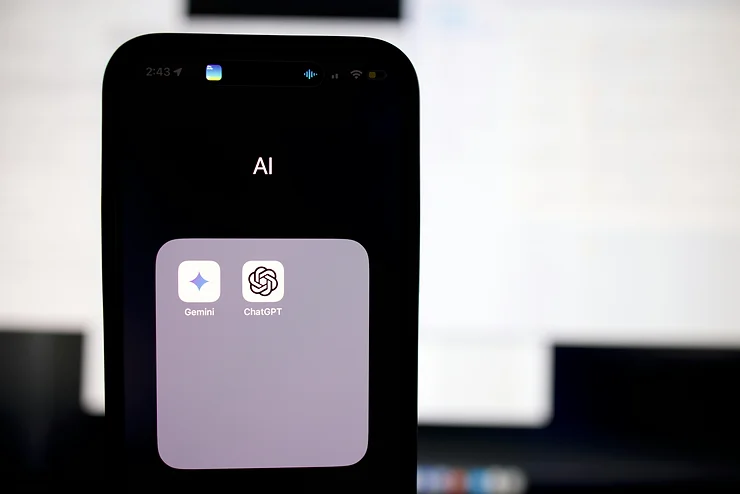
- October 25, 2024
4 Use Cases for Generative AI
Introduction
Generative AI is revolutionizing industries by empowering machines to generate human-like content such as text, images, music, and even video. It leverages advanced machine learning techniques, particularly deep learning models like Generative Adversarial Networks (GANs) and transformers, to produce creative outputs that mimic human ingenuity. Unlike traditional AI systems that operate based on pre-programmed rules and logic, generative AI learns from vast amounts of data to generate unique outputs.
This technology has the potential to disrupt multiple industries by automating creative processes, streamlining operations, and enhancing customer interactions. From transforming how content is created in marketing and media to offering synthetic data for machine learning models, generative AI is becoming an indispensable tool for companies looking to innovate and scale.
In this blog post, we will explore four major use cases where generative AI is creating significant impact: content creation and marketing, synthetic data generation, customer service automation, and personalized marketing.
1. Content Creation and Marketing
Content creation has historically been a time-intensive process that relies heavily on human creativity and labor. However, generative AI is transforming this space by automating the creation of written, visual, and even audio content. This allows businesses to scale their content production efforts while maintaining high quality, enabling marketers to focus more on strategy and less on execution.
-
AI in Writing and Blogging
Generative AI tools like Jasper, Copy.ai, and Writesonic are designed to create high-quality written content in a matter of minutes. These platforms can draft blog posts, product descriptions, and social media content by understanding context, tone, and user input. Marketers can simply enter a prompt or topic, and the AI generates content that is often indistinguishable from human writing.
For instance, using a tool like Jasper, you can input a blog topic, such as “How AI is Transforming Marketing,” and the platform will generate an entire post, complete with headings, subheadings, and engaging content. This speeds up the process for content creators and allows businesses to maintain a consistent flow of blog posts and articles, without overburdening human writers.
-
AI in Social Media Marketing
Social media marketing has become essential for brand visibility, but the constant demand for fresh, engaging content can be overwhelming. AI-driven tools like Lately and Hootsuite’s AI integrations help marketers generate social media posts, captions, and hashtags that are specifically designed to resonate with the target audience.
AI-powered tools can analyze existing content to suggest the best possible social media posts, automatically optimize posts for different platforms, and even schedule them for peak engagement times. This means that marketers can generate a month’s worth of posts in a fraction of the time it would take manually.
-
AI in Graphic Design
Generative AI is also making waves in the world of graphic design. Tools like DALL·E and Canva’s AI features allow users to generate custom images, infographics, and illustrations with just a few clicks. Instead of spending hours creating visuals from scratch, marketers and designers can use AI to generate high-quality images tailored to their specific needs.
For example, DALL·E can create original images based on textual descriptions, which allows companies to quickly generate visual content for ads, social media posts, or product presentations without needing to hire a professional designer. This not only saves time but also significantly reduces costs.
Example: AI-Powered Marketing Platforms
Platforms like Phrasee and Persado utilize AI to write effective email marketing copy, headlines, and even advertisements. These tools analyze historical customer data to understand language patterns that generate the most engagement, resulting in more personalized and effective marketing campaigns. By producing content that resonates with specific audiences, AI-driven platforms can help businesses achieve higher conversion rates and engagement levels.
Generative AI’s role in content creation extends beyond automation to augment creativity. AI-generated content provides fresh ideas that might not have crossed a human creator’s mind, offering new ways to approach storytelling and marketing.
2. Synthetic Data for Machine Learning
Another powerful application of generative AI is the creation of synthetic data. In machine learning, large datasets are essential for training models, but gathering and curating real-world data can often be challenging, particularly when it comes to sensitive information like healthcare records or financial transactions. Generative AI solves this problem by generating synthetic data—artificially created data that mimics real-world data but does not contain any actual user information.
Benefits of Synthetic Data
1. Data Privacy
One of the key benefits of synthetic data is its ability to bypass privacy concerns. Since synthetic data is generated by AI and does not contain real-world user information, it allows organizations to train machine learning models without risking privacy violations. This is particularly useful in regulated industries such as healthcare, where the use of patient data is restricted by laws like HIPAA (Health Insurance Portability and Accountability Act).
For instance, healthcare organizations can use synthetic medical records to train AI models for disease prediction or treatment recommendations. These synthetic datasets simulate real-world scenarios while ensuring that no actual patient information is exposed.
2. Faster Time to Market
The process of collecting, curating, and labeling real-world data can be time-consuming and expensive. Synthetic data accelerates this process by allowing companies to generate large volumes of high-quality data in a fraction of the time. This reduces the overall time needed to train machine learning models, speeding up the deployment of AI-driven products and services.
Example: AI Models in Autonomous Vehicles
Companies like Tesla and Waymo are using generative AI to create synthetic driving scenarios. These simulations help AI models learn to navigate various road conditions, such as bad weather or complex traffic situations, without needing to rely on potentially dangerous real-world testing. By simulating millions of driving hours, synthetic data allows autonomous vehicle companies to rapidly improve their AI models’ accuracy and safety, accelerating the development process.
3. Customer Service Automation
Customer service is a critical touchpoint for businesses, and generative AI is revolutionizing how companies interact with their customers through chatbots and virtual assistants. AI-driven chatbots, powered by natural language processing (NLP), can offer real-time, human-like interactions that improve the overall customer experience and reduce operational costs.
The Rise of AI-Powered Chatbots
Generative AI has advanced chatbot technology to the point where bots can now engage in meaningful conversations with users. Unlike earlier rule-based chatbots that could only respond to specific queries, AI chatbots such as Zendesk’s Answer Bot or LivePerson’s Conversational AI can understand context, interpret open-ended questions, and provide relevant, personalized responses.
These AI-powered chatbots can handle tasks such as answering frequently asked questions, guiding users through complex processes, and even helping with product recommendations or purchases. They are also capable of learning from past interactions to continually improve their responses, creating a more personalized experience for each customer.
Key Benefits of AI-Powered Customer Service:
-
24/7 Availability: AI chatbots allow businesses to provide round-the-clock support without needing to maintain a 24-hour support staff. This ensures that customers can get assistance anytime, regardless of time zones or office hours.
-
Scalability: AI chatbots can handle thousands of interactions simultaneously, making them a scalable solution for businesses with high volumes of customer inquiries. This helps companies improve response times and handle spikes in demand without hiring additional support staff.
-
Human-Like Interactions: Advanced chatbots powered by generative AI can engage in more natural and fluid conversations. These bots understand user intent, use contextual clues, and offer personalized responses, providing a more satisfying and human-like experience compared to traditional chatbots.
Example: AI Chatbots in E-commerce
E-commerce platforms such as Shopify and Amazon use AI chatbots to assist customers with product recommendations, order tracking, and issue resolution. These bots not only reduce the burden on human customer service agents but also enhance the shopping experience by providing instant, personalized assistance.
Additionally, voice-based virtual assistants like Amazon Alexa and Google Assistant are increasingly being used in customer service applications. These voice-activated AI systems allow users to interact with businesses through spoken commands, further enhancing accessibility and user convenience.
4. Personalized Marketing and Recommendations
In an age where consumers expect highly personalized experiences, generative AI is becoming an indispensable tool for businesses looking to deliver tailored marketing content and product recommendations. AI models can analyze vast amounts of customer data—including browsing habits, purchase history, and engagement patterns—to predict what a specific user is likely to be interested in, and then generate personalized recommendations accordingly.
How Personalized Marketing Works:
-
Behavioral Data Analysis: Generative AI models analyze customer behavior, such as search queries, previous purchases, and time spent on particular web pages. Using this data, the AI identifies patterns and trends that can be used to tailor future interactions with the user.
-
Generating Personalized Content: Once the AI understands a user’s preferences, it can automatically generate personalized content, such as product recommendations, targeted ads, or custom email offers. These suggestions are designed to appeal specifically to the individual’s interests and behaviors, increasing the likelihood of engagement or conversion.
-
Dynamic Web Experiences: Some e-commerce websites powered by AI offer dynamic user experiences where product recommendations, content, and even website layouts change in real-time based on user behavior. This creates a more engaging and relevant shopping experience, which can result in higher customer satisfaction and increased sales.
Example: AI-Powered Recommendations in Streaming Services
Streaming platforms like Netflix and Spotify are leading the way in personalized content recommendations. Netflix uses AI to analyze viewers’ watching habits and preferences, then generates personalized movie and TV show suggestions. Similarly, Spotify’s recommendation engine uses AI to suggest new songs and playlists based on users’ listening habits, ensuring that content is always relevant and personalized.
This level of personalization not only improves user satisfaction but also helps businesses increase engagement, reduce churn, and drive long-term customer loyalty.
Conclusion
Generative AI is transforming industries by automating processes that once required human creativity and effort. From content creation and marketing to customer service and personalized experiences, the technology is opening new doors for businesses to innovate and scale. As AI continues to evolve, we can expect even more groundbreaking applications that will further enhance how we interact with the digital world.
Whether it’s through generating synthetic data, personalizing user experiences, or automating customer service, generative AI is set to become a cornerstone technology for businesses looking to stay competitive in the digital age. The possibilities are vast, and the impact is only just beginning to be realized.









